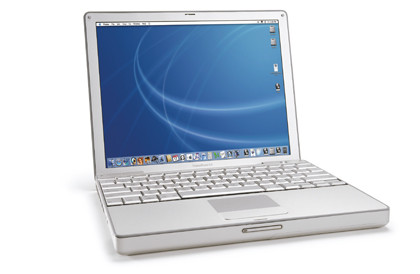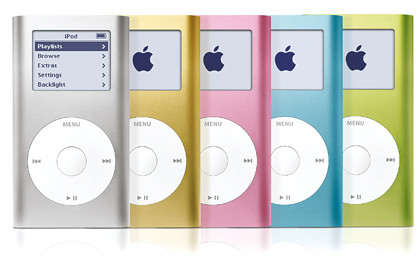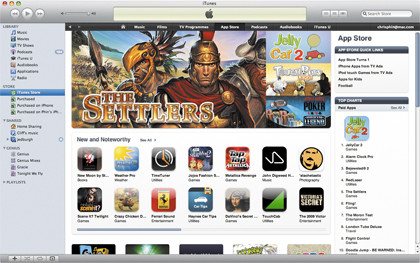10 ways Apple owned the decade
Milestones from the powerhouse of innovation
6. PowerBook G4 12-inch
A notebook with perfect power/portability balance
When, with great fanfare, Apple launched the MacBook Air, a sizeable chunk of oldschool Mac users looked on in bemusement at the plaudits that were being heaped on this light, relatively puny notebook.

It was slim, sure, but it also had a large footprint; and in any case, Apple had already solved the problem of making a small, powerful computer once before.
At the same time that Apple launched the world's largest laptop – the 17-inch PowerBook G4 – it also introduced the 12-inch model. Both were made of anodised aluminium, but it's not just this that makes them still feel modern. They could burn DVDs, and included Bluetooth and AirPort Extreme. (Indeed, even just the basic industrial design persisted in tweaked form all the way up until late 2008).
7. Apple Stores
A high-street presence – and bags of cash
Sign up for breaking news, reviews, opinion, top tech deals, and more.
When Apple opened its Store on Manhattan's Upper West Side, Gizmodo reported Apple's Senior Vice President of Retail Operations saying that in 2001, Apple's sales totalled $5.4 billion.

This year, the sales from Apple Stores alone totalled $6.6 billion. Therein lies the value of having stores on the high streets of many of the world's major cities.
8. iPod mini
The iPod revolution started right here
Many scoffed at it when it was launched. Compared to the price-per-gigabyte of the full-sized iPod, it looked like a bad deal. But the iPod mini was a pivotal product. On a purely hardware level, it was the first iPod to introduce the idea of multiple colours, and it was on the mini that the Click Wheel made its debut.

But much more important was its impact on Apple's business. It was cheap, and, at 4GB, held 'enough' songs for consumers at the time – all of which meant that the mini was the point in the history of the iPod where the sales went through the roof.
But the bigger story here is about Apple's momentum to dominate the portable media player market, and make iTunes synonymous with digital music.
9. Intel processors
Freed Apple to make fast, modern notebooks
In the early years of the century, it became clear that the IBM/Motorola processors that Apple used were beginning to falter. When Jobs introduced Macs that used the new G5 processor, he promised that 3GHz chips would be available within the year; two years later, you still couldn't buy a 3GHz G5.
And despite the G5's power, it produced so much heat that it was impossible to fit into the compact case of a notebook. Switching to Intel allowed Apple to implement powerful chips in its notebooks, as well as take advantage of the highly efficient performance of Intel's chips while maintaining a reasonable battery life. (And the ability to run Windows is a handy little side-benefit.)
10. iTunes
Made digital content distribution a reality
We're not just talking about the app, iPods or the Store here – iTunes is included because it's such a huge ecosystem. The application itself is certainly important in its own right.

It was the first major standalone app that Apple made for Windows (bar QuickTime) and, with its original 'Rip, Mix, Burn' advertising tagline, it helped kick-start the entire digital music revolution.
It's the iTunes Store that has had the most cultural impact, however. Although DRM has now been stripped from the iTunes Store, Apple's original refusal to license FairPlay – meaning you couldn't play your Store-bought tracks on anything but an iPod – certainly kept some people buying iPods that might otherwise have chosen another brand.
But it's the fact that Apple was the first company to make a serious attempt at the legal digital distribution of media that gains it a place here. It's unknown how much money the iTunes Store makes itself – though it has been estimated that the App Store brought in $2.4 billion in annual revenue – but that's almost irrelevant.
Purely digital distribution was a pipe dream for companies and consumers for years. Apple made it a reality.
-------------------------------------------------------------------------------------------------------
First published in MacFormat Issue 216
Liked this? Then check out 25 milestones from 25 years of the Mac
Sign up for the free weekly TechRadar newsletter
Get tech news delivered straight to your inbox. Register for the free TechRadar newsletter and stay on top of the week's biggest stories and product releases. Sign up at http://www.techradar.com/register
- 1
- 2
Current page: Apple Stores, iPod mini, iTunes and more
Prev Page 10 magic milestones in Apple's history